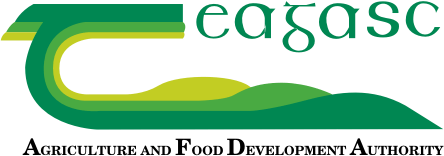27 November 2023
Breeding targets for winter milk herds

Breeding goals for winter milk herds, as James Dunne, Teagasc Dairy Specialist explains, should be centred on improving milk solids output, while improving fertility traits such as calving interval and six week calving rate.
Feed efficiency, health and longevity are also important goals. The Economic Breeding Index (EBI) balances these objectives.
The key breeding plan steps are:
- Identify a start and end date for the coming breeding season. For the majority of winter milk herds (< 50% liquid contract), starting to calve in October will suffice to meet contract targets. Also work out the number of cows required to calve in the autumn to efficiently supply contracts.
- Using your herd records, identify the lower-performing cows in the herd. Either mark them for culling or breed them to high Dairy Beef Index (DBI) beef bulls. Do not breed your replacements from the following cows: low milk solids; poor temperament; poor fertility; high SCC; lame etc.
- Select a panel of high EBI (>€300) bulls from the Active bull list (>7 bulls for a herd of up to 100 cows). Your bull team should be balanced for both the milk (>€100) and fertility (>€120) sub-index.
- Target a high combined kg of milk solids (>35kg) figure in the team of bulls. Aim to hold the milk volume proof at 0-150kg, with high fat (>0.24) and protein (>0.17) potential.
- The health sub-index has shown a direct correlation to SCC performance, therefore select bulls that a positive for health, with a team average >€5
- Avoid extremes with regard to type/conformation in order to breed a medium-sized, functional cow that will last in the herd. Remember a cow with a maintenance sub-index of €8 shall be 600kg mature liveweight.
- Select 2-3 bulls within your bull team with low calving ease proofs for use on your replacement heifers.
- Target to breed all replacement heifers in the first 10 days of the breeding season. A simple synchronisation programme will help achieve this.
- Use the ‘Sire Advice’ tool on Herdplus to develop your team of bulls, create a mating plan and avoid any inbreeding.
Figure 1: Johnstown Castle Winter Milk bull team for autumn 2023

Also read: How dependent is your farm on having a student this spring?
Also read: Teagasc National Dairy Conference: ‘Adapting to a changing dairy farming environment’
